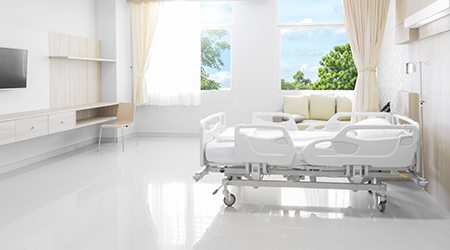Crisitunity isn’t a real word, but if it was, it would accurately describe the situation healthcare facilities managers find themselves in as they try to find opportunities to improve the interior design of their buildings -- both existing and new -- that have emerged from the crisis of COVID-19.
The pandemic has highlighted the plight of the healthcare infrastructure, according to Financial Express. In particular, it has exposed critical shortcomings in the design of hospitals, which too often failed to provide enough space for patients and reduce cross-infection. These issues have made it essential to reevaluate and reimagine clinical environments. The situation offers an opportunity to re-invigorate the healthcare facilities. Among the design considerations that healthcare facilities managers need to examine are these:
Flexibility in design. Flexibility and modularity are crucial to make hospital designs adaptable and meet the vastly increasing patient and equipment load. Grid planning can be adopted to construct long-span spaces that can accommodate the number of patients and allow greater flexibility.
Advancement of technology and the need for touch-free controls have pushed forward the demand for a technologically driven approach towards healthcare design. Smart systems for lighting, temperature, and other building functions can help curtail the spread of infection on these highly used surfaces.

 Grounding Healthcare Spaces in Hospitality Principles
Grounding Healthcare Spaces in Hospitality Principles UC Davis Health Selects Rudolph and Sletten for Central Utility Plant Expansion
UC Davis Health Selects Rudolph and Sletten for Central Utility Plant Expansion Cape Cod Healthcare Opens Upper 2 Floors of Edwin Barbey Patient Care Pavilion
Cape Cod Healthcare Opens Upper 2 Floors of Edwin Barbey Patient Care Pavilion Building Sustainable Healthcare for an Aging Population
Building Sustainable Healthcare for an Aging Population Froedtert ThedaCare Announces Opening of ThedaCare Medical Center-Oshkosh
Froedtert ThedaCare Announces Opening of ThedaCare Medical Center-Oshkosh